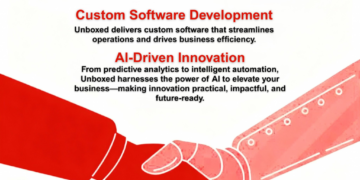Running a nursery is a cycle of planning, growing, tracking, and delivering. Each step relies on precise timing. The right nursery management software keeps every part of that cycle connected so teams can focus on growing plants instead of managing spreadsheets.
A modern nursery management software system integrates production, inventory, orders, and logistics. Here’s what a typical workday may look like when every process runs through that system, from early propagation to final delivery.
Morning: Tracking Production and Growth
The day starts with production managers reviewing plant schedules. They check which batches need propagation, which are moving to the next growth phase, and what’s nearly ready to ship.
Each tray or bench is labeled with a barcode or ID that links directly to digital records. When workers move plants from propagation to transplanting, they scan the trays, and the system automatically updates the quantities. This ensures the live inventory remains accurate without requiring manual counting.
Managers also review labor assignments and material use. The system displays the number of hours allocated to each plant type and the quantity of pots, liners, or tags used. This data helps plan workloads and track costs through the production cycle.
Mid-Morning: Managing Inventory and Space
Inventory visibility is crucial when space fills up fast. The software maps available bench areas across all greenhouses. Staff can see which spaces are full, empty, and reserved.
If a large retail order comes in, managers can quickly check if enough mature plants are available. If not, they can identify which batches will be ready soon and plan accordingly. Real-time data avoids overpromising and keeps orders realistic.
For nurseries with multiple locations, the software shows the current inventory at each site. Transfers between sites are recorded in the same system, ensuring accurate stock levels everywhere.
Late Morning: Order Generation and Picking
When new customer orders arrive, the system creates digital picking lists. Staff can view these lists on handheld devices, scan items as they pull them, and mark completed orders immediately.
The plant nursery management software links order data to live inventory. Once an order is picked, the system automatically adjusts counts. This prevents double-selling and keeps the available stock accurate for the next buyer.
Order generation also includes packing details and the number of racks, trays, or pallets required for each order. That information flows to logistics planning so shipping teams know what to prepare.
Afternoon: Shipping and Logistics
By midday, the shipping team begins organizing deliveries. Using the nursery management software, they can group orders by destination or retailer and plan truck routes that save time and space.
The system tracks which orders are loaded, which are in transit, and which have been delivered. If a driver scans a shipment before departure, that update appears immediately in the dashboard. This visibility enables customer service teams to provide accurate delivery updates.
Load and route data also support better planning for future shipments. Managers can identify which routes took longer or where partial loads occurred, enabling them to improve scheduling and reduce fuel costs.
Late Afternoon: Sales, Replenishment, and Reporting
Once deliveries are in transit, the focus shifts to replenishment. The system tracks which products sold fastest and which need replacement in retail channels. Historical sales and order data help predict what will move next, supporting smarter production planning.
Sales data flows directly into accounting, eliminating double entry. Managers can see profit margins, outstanding invoices, and customer trends in one view.
The plant nursery management software also generates end-of-day reports automatically. These reports show inventory changes, fulfilled orders, and production activity.
Evening: Reviewing Performance and Planning
At the end of the day, managers review dashboards that summarize production, sales, and logistics. They check which batches are ahead of schedule, which need attention, and what orders are due next.
If one product line is running low, production can schedule new propagation right away. If sales spike for a specific plant variety, teams can adjust labor and materials to meet demand.
Data from the day also informs long-term forecasting. Over time, trends become clear, such as peak shipping days, best-selling plants, and seasonal changes in customer demand.
Conclusion
A connected system keeps every part of a nursery synchronized. With nursery management software, teams can track plants, manage space, plan orders, and ship on time from one platform. Daily decisions become faster and more accurate, and information flows smoothly from propagation to delivery because everyone works from the same data.


















